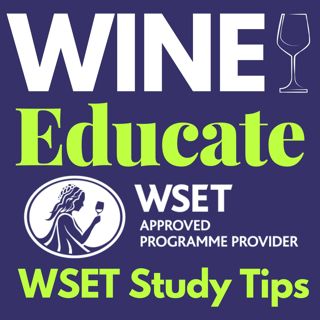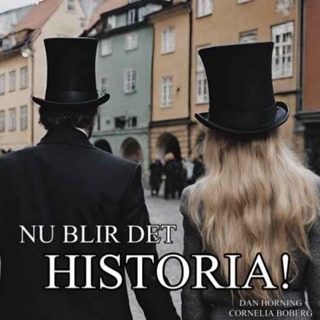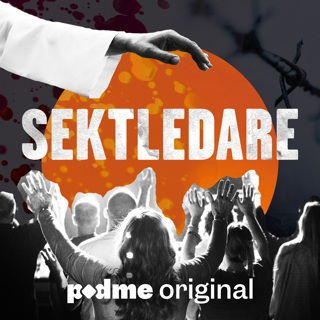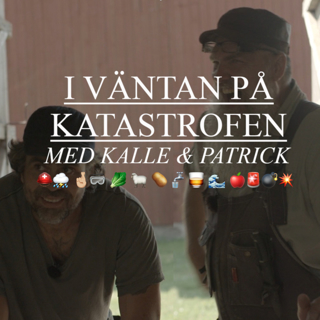
14. Exploring WSET Beer Education with Sal Mortillaro
Resources & Links Sign up for the Wine Educate Newsletter: www.wineeducate.com/newsletter-signup Upcoming WSET Classes: www.wineeducate.com How to Contact Us Website: www.wineeducate.com Email: joanne@wineeducate.com Instagram & Facebook: @wineeducate Episode Summary: In this episode of the Wine Educate Podcast, host Joanne Close welcomes Sal Mortillaro, WSET Beer Educator, to discuss the world of beer education, certifications, and the exciting expansion of WSET's Beer program. Sal shares his impressive background in beer judging, competitions, and how he became part of the first-ever cohort of WSET Beer educators. Joanne and Sal discuss what students can expect from WSET Level 1 and Level 2 Beer courses, how beer education differs from wine certifications, and what makes beer tasting so fascinating. Topics Covered: Sal's journey from beer enthusiast to Grand Master Beer Judge The structure of the Beer Judge Certification Program (BJCP) and how it differs from WSET Overview of the Cicerone Certification and how it compares to other beer education paths The launch of WSET Level 1 and Level 2 Beer Certifications What students will learn in each level, including beer styles, tasting techniques, and food pairings The similarities between beer and wine education, including tasting structure and analysis Sal's personal favorite beer styles and competition judging experiences Resources & Links Sign up for the Wine Educate Newsletter: www.wineeducate.com/newsletter-signup Upcoming WSET Classes: www.wineeducate.com How to Contact Us Website: www.wineeducate.com Email: joanne@wineeducate.com Instagram & Facebook: @wineeducate
4 Feb 19min

13. Tasting a New Zealand Sauvignon Blanc Using the SAT Levels 1–3
Resources & Links Sign up for the Wine Educate Newsletter: www.wineeducate.com/newsletter-signup Upcoming WSET Classes: www.wineeducate.com How to Contact Us Website: www.wineeducate.com Email: joanne@wineeducate.com Instagram & Facebook: @wineeducate Summary: In this episode of the Wine Educate podcast, Joanne walks listeners through a detailed WSET Systematic Approach to Tasting (SAT) analysis of a New Zealand Sauvignon Blanc from Marlborough, showcasing how tasting notes evolve across WSET Levels 1, 2, and 3. Using the 2023 Three Brooms as an example, she explores the differences in structure, detail, and evaluation as students progress through each level. Joanne also shares insights into common descriptors like "gooseberry" and "cat's pee," breaking them down for clarity and context. What's in This Episode: Introduction: Quick recap of episodes 11 and 12. The purpose of tasting a white wine, specifically a New Zealand Sauvignon Blanc. Explanation of why this wine is a "testable" example for WSET practice. Level 1 SAT Tasting Note: Focus on primary characteristics (appearance, basic aromas, and palate components). Level 2 SAT Tasting Note: Introducing intensity, finish, and BLIC (Balance, Length, Intensity, Complexity). Greater specificity in identifying aromas (herbaceous, citrus) and linking them to clusters. Level 3 SAT Tasting Note: Adding modifiers like "medium plus" or "medium minus." Discussion of development, readiness for drinking, and nuances like "gooseberry" and "cat's pee." Expanded flavor profiles, including tropical and stone fruits. Explaining Common Descriptors: Gooseberry: What it is, where it's found, and how its tart and herbaceous qualities are linked to New Zealand Sauvignon Blanc. Cat's Pee: Why this descriptor is used, its aromatic significance, and reframing it as an "ammoniated" note. Conclusions Using BLIC: Quality assessment: "Good" rating with reasoning. Readiness for drinking: Drink now, not suitable for aging. Final Thoughts: Acknowledging the value of practice with "testable" wines. Resources & Links Sign up for the Wine Educate Newsletter: www.wineeducate.com/newsletter-signup Upcoming WSET Classes: www.wineeducate.com How to Contact Us Website: www.wineeducate.com Email: joanne@wineeducate.com Instagram & Facebook: @wineeducate
28 Jan 14min

12. How the SAT Progresses: Tasting a Bordeaux Wine from Level 1 to Level 3
Resources & Links Sign up for the Wine Educate Newsletter: www.wineeducate.com/newsletter-signup Upcoming WSET Classes: www.wineeducate.com How to Contact Us Website: www.wineeducate.com Email: joanne@wineeducate.com Instagram & Facebook: @wineeducate Episode Summary In this episode of the Wine Educate Podcast, Joanne Close breaks down how the WSET Systematic Approach to Tasting (SAT) evolves from Level 1 to Level 3. Using a 2000 Bordeaux as the example, Joanne demonstrates how tasting notes become progressively more detailed and analytical, helping students understand what to expect as they advance through the WSET levels. What's in This Episode? Overview of the SAT Progression Explanation of the purpose and focus at each level: Level 1: Introduces basic structural components and characteristics of wine. Level 2: Adds intensity, finish, and introduces quality assessment with BLIC. Level 3: Increases specificity with development, plus/minus modifiers, and readiness for drinking. Tasting Example: 2000 Bordeaux (Right Bank) Level 1 SAT Note: Basic observations: red wine, black fruit, oak, dry, medium tannin, medium alcohol, full body. Level 2 SAT Note: Introduced intensity, finish, and quality assessment using BLIC. Example conclusion: Medium ruby color, pronounced aromas of black fruit, oak, and tertiary notes; long finish; outstanding quality. Level 3 SAT Note: Added clarity, development, and plus/minus modifiers. Example conclusion: Clear, medium ruby; pronounced aromas of blackcurrant, tobacco, and cedar; medium-plus tannin; drink now but has potential for aging. Key Takeaways The SAT evolves to help students build confidence and precision in wine tasting. Practice is key—calibrate your palate with your instructor. Preview of Next Episode Joanne will demonstrate SAT progression for a white wine using a New Zealand Sauvignon Blanc. Resources & Links Sign up for the Wine Educate Newsletter: www.wineeducate.com/newsletter-signup Upcoming WSET Classes: www.wineeducate.com How to Contact Us Website: www.wineeducate.com Email: joanne@wineeducate.com Instagram & Facebook: @wineeducate
21 Jan 16min

11. What is BLIC and How to Use It to Assess Wine Quality
Resources & Links Sign up for the Wine Educate Newsletter: www.wineeducate.com/newsletter-signup Upcoming WSET Classes: www.wineeducate.com How to Contact Us Website: www.wineeducate.com Email: joanne@wineeducate.com Instagram & Facebook: @wineeducate Episode Description: In this episode we break down BLIC, the WSET framework for evaluating wine quality and readiness for drinking. Discover how this structured approach—covering Balance, Length, Intensity, and Complexity—fits into the Standard Approach to Tasting (SAT) and how it helps wine students and professionals make objective assessments. Joanne explains each component of BLIC, provides practical examples, and highlights how it is integrated into WSET Levels 2 and 3. Whether you're a seasoned wine enthusiast or just starting your wine education journey, this episode is packed with insights to refine your tasting skills. Resources SAT Resources: WSET Level 1 SAT WSET Level 2 SAT WSET Level 3 SAT Newsletter Sign-Up: Click here to join the Wine Educate newsletter for exclusive study tools, tips, and content not available anywhere else. Learn More About Classes: Visit our website for details on upcoming WSET classes. Discovery Call: Schedule a call with Joanne to discuss your wine education goals. What's in This Episode? Introduction: Overview of BLIC and its role in evaluating wine quality. What is BLIC? Background: Developed by WSET, BLIC complements the SAT and is introduced in Level 2, continuing into Level 3. Acronym breakdown: Balance: How well components like sweetness, acidity, tannin, alcohol, and body work together. Length: Persistence of multiple pleasant flavors after swallowing or spitting. Intensity: Strength of aroma and flavor or the presence of clearly identifiable characteristics. Complexity: Range and interplay of primary, secondary, and tertiary aromas and flavors. How to Use BLIC: Guidelines for assessing quality: Faulty/Poor: No components meet BLIC standards. Acceptable: One BLIC component present. Good: Two BLIC components present. Very Good: Three BLIC components present. Outstanding: All four BLIC components present. Readiness for drinking categories: Too young. Drink now with potential for aging. Drink now, not suitable for further aging. Too old. Examples: Good Quality Wine: Beaujolais Nouveau with identifiable characteristics but no length or complexity. Outstanding Wine: 2008 Barolo demonstrating balance, long finish, intensity, and complexity, with potential for aging. BLIC in Practice: Importance of calibration with your instructor in WSET classes. Tips for using BLIC in blind tastings and exams. Upcoming Classes and Workshops: Highlight of the Level 3 tasting workshop at Wine Educate, open to all students. Exclusive information and announcements available through the newsletter. Conclusion and Next Episode Teaser: Summary of BLIC's role in wine evaluation. Sneak peek into next week's episode: comparing the same wine using SAT for Levels 1, 2, and 3 to demonstrate how the framework evolves in complexity. Key Takeaways: BLIC is an essential tool for evaluating wine quality and readiness for drinking in WSET Levels 2 and 3. Objective tasting and assessment require consistent practice and calibration with your instructor. The Wine Educate newsletter is your go-to source for exclusive resources, updates, and announcements. Resources & Links Sign up for the Wine Educate Newsletter: www.wineeducate.com/newsletter-signup Upcoming WSET Classes: www.wineeducate.com How to Contact Us Website: www.wineeducate.com Email: joanne@wineeducate.com Instagram & Facebook: @wineeducate
14 Jan 18min

10. Evaluating Wine Using, the SAT & Why Spitting is Important
Resources & Links Sign up for the Wine Educate Newsletter: www.wineeducate.com/newsletter-signup Upcoming WSET Classes: www.wineeducate.com How to Contact Us Website: www.wineeducate.com Email: joanne@wineeducate.com Instagram & Facebook: @wineeducate Welcome to the Wine Educate Podcast! In this episode, host Joanne Close dives into the WSET Systematic Approach to Tasting (SAT) and its role in wine education. Joanne also covers the often-overlooked but essential practice of spitting in wine tastings—why it matters and how to do it effectively. 1. The WSET Systematic Approach to Tasting (SAT): What is the SAT? Created by the WSET in 1969 as a structured, objective framework for wine tasting. Used by over 100,000 students annually in 70+ countries. Why is it important? Ensures consistent and clear observations. Helps identify grape variety, climate, winemaking techniques, and quality. Builds confidence and analytical skills essential for exams and professional practice. A Detective's Approach: Think critically about wine's components and trust your observations. Avoid trying to force conclusions before you've completed your tasting notes. 2. Breaking Down the SAT – Appearance, Nose, Palate: Appearance: Assess clarity, intensity, and color under proper lighting. Example: A pale ruby wine may suggest a thin-skinned grape like Pinot Noir or Gamay. Nose: Focus on aroma intensity and characteristics: primary, secondary, and tertiary. Pro tip: Spend extra time on the nose before tasting; it reveals so much. Palate: Sweetness: Tip of the tongue. Acidity: Tingling on the sides of the tongue and salivary glands. Tannin: Drying sensation on gums and teeth. Alcohol: Warmth in the back of the throat or slight nasal "sting." Body: Weight or texture of the wine. Structural components and where to detect them: 3. Why Spitting is Important: Professional Tasting Practice: Avoid palate fatigue and overconsumption. Essential for evaluating multiple wines, especially at trade events or exams. Tips for Spitting Effectively: Bring your own spit cup (pro tip: a Mardi Gras cup works perfectly in New Orleans!). Practice at home to build confidence. Don't feel self-conscious—spitting is standard in professional settings. For WSET Students: Critical for Level 3 exams: Spit during the tasting to stay sharp for the 2-hour theory portion. Key Takeaways: The SAT provides a structured approach to wine tasting that grows in complexity as you progress through WSET levels. Spitting is an essential skill to maintain focus, avoid palate fatigue, and ensure objectivity. Resources & Links Sign up for the Wine Educate Newsletter: www.wineeducate.com/newsletter-signup Upcoming WSET Classes: www.wineeducate.com How to Contact Us Website: www.wineeducate.com Email: joanne@wineeducate.com Instagram & Facebook: @wineeducate
7 Jan 24min

9. Beyond the Glass: How External Factors Influence Wine Tasting
Resources & Links Sign up for the Wine Educate Newsletter: www.wineeducate.com/newsletter-signup Upcoming WSET Classes: www.wineeducate.com How to Contact Us Website: www.wineeducate.com Email: joanne@wineeducate.com Instagram & Facebook: @wineeducate Episode Summary: In Episode 9 of the Wine Educate Podcast, Joanne Close explores how external factors can significantly impact your wine tasting experience. From lighting and temperature to the glassware you use, creating a proper tasting environment is essential for both objective analysis and enjoyment. Designed especially for WSET students, this episode emphasizes the importance of preparing both your setting and yourself to maximize tasting accuracy and success. What You'll Learn in This Episode: Why Your Tasting Environment Matters: How external factors like smells, sounds, and distractions influence your perception of wine. The importance of creating a neutral, consistent space for tasting. The Ideal Tasting Environment: Neutral Space: Avoid distractions, strong odors (e.g., perfumes, food), and scented items. Lighting: Use natural or white light to evaluate wine appearance properly. Temperature: Maintain a comfortable room temperature (~68°F) and serve wine at its ideal temperature. Space: Ensure adequate room for glasses, notes, and comfortable seating. Preparing Yourself for Tasting: Stay hydrated: Dehydration reduces saliva production, affects aroma detection, and exaggerates alcohol perception. Avoid palate disruptors: Neutralize your palate by drinking water or eating plain crackers before tasting. Glassware Tips: Use clean, unscented glassware to avoid unwanted aromas. Suitable shapes like ISO standard tasting glasses help focus aromas and maintain consistency. Practical Tips for Success: Why spitting during tastings helps with clarity and focus (hint: stay tuned for the next episode). The importance of standardizing your tasting practices for WSET success. Homework for This Week: Assess your current tasting environment. Identify a few simple changes to create a more neutral and conducive space for wine tasting. Resources & Links Sign up for the Wine Educate Newsletter: www.wineeducate.com/newsletter-signup Upcoming WSET Classes: www.wineeducate.com How to Contact Us Website: www.wineeducate.com Email: joanne@wineeducate.com Instagram & Facebook: @wineeducate
31 Dec 202420min

8. WSET Level 2 Award in Wines: What to Expect and How to Prepare
Resources & Links Sign up for the Wine Educate Newsletter: www.wineeducate.com/newsletter-signup Upcoming WSET Classes: www.wineeducate.com How to Contact Us Website: www.wineeducate.com Email: joanne@wineeducate.com Instagram & Facebook: @wineeducate Episode Summary: In this episode of the Wine Educate Podcast, Joanne dives into everything you need to know about the WSET Level 2 Award in Wines. Whether you're considering enrolling or you're already signed up, this episode is packed with valuable insights on what to expect, how to prepare, and how to make the most of your study journey. Topics Covered: Overview of WSET Level 2: What the course covers: grape varieties, wine styles, climate effects, winemaking, fortified and sparkling wines, and more. Course structure: 8 weekly sessions or a more intensive format. The Tasting Experience: Taste 48 wines over the course of the program (6 wines per session). Guided use of the Systematic Approach to Tasting (SAT)—no blind tasting required. Exam Details: 1-hour multiple-choice exam with 50 questions. Pass levels: Pass: 55–69% Pass with Merit: 70–84% Pass with Distinction: 85%+ Important note: Once you pass, your grade is final. Preparation Tips: Read the textbook, Wines: Looking Behind the Label, cover to cover. Use the WSET Specification as your guide for study focus and exam weighting. Create flashcards for active learning—Joanne shares how this practice has helped her throughout her wine education journey. The SAT Card: Practical tips for building your sensory catalog. How to practice identifying aromas and flavors with everyday items like fresh herbs and produce. The Transformational Impact: Gain confidence in understanding wine labels, pairing food and wine, and navigating wine shops. Discover new wine styles and favorites, from Riesling to Fino Sherry. Advice for Prospective Students: Don't procrastinate—sign up early, get the materials, and start preparing. Enjoy the process and the transformation that comes with the course. Outro: Thank you for tuning in to the Wine Educate Podcast! If you found this episode helpful, please share it with your fellow wine enthusiasts and leave a review. Stay tuned for more tips, study guides, and wine education insights in future episodes. Cheers! Resources & Links Sign up for the Wine Educate Newsletter: www.wineeducate.com/newsletter-signup Upcoming WSET Classes: www.wineeducate.com How to Contact Us Website: www.wineeducate.com Email: joanne@wineeducate.com Instagram & Facebook: @wineeducate
24 Dec 202426min

7. Meet Your WSET Spirits Educator Matt Ray!
Resources & Links Sign up for the Wine Educate Newsletter: www.wineeducate.com/newsletter-signup Upcoming WSET Classes: www.wineeducate.com How to Contact Us Website: www.wineeducate.com Email: joanne@wineeducate.com Instagram & Facebook: @wineeducate Welcome back to the Wine Educate Podcast! This week marks an exciting milestone as we host our very first interview. Meet Matt Ray, WSET Spirits Educator and spirits professional, as he shares his unique career journey and passion for spirits education. From his early days as a bartender to his current role at the Sazerac House, Matt takes us through his professional evolution and why he feels WSET certification is the gold standard for spirits education. What We Cover in This Episode: Matt's Career Journey: Learn how Matt transitioned from bartending to teaching, and now representing one of the largest spirits companies in the world. Introduction to Spirits Certifications: Discover the range of spirits certifications available, including the gold-standard WSET offerings and alternatives such as Certified Spirits Specialist (CSS) and Bourbon certifications from Moonshine University. Why Choose WSET for Spirits Education? Matt discusses why WSET certifications are the most rigorous and respected in the industry. What to Expect in WSET Level 1 & Level 2 Spirits Classes: Matt breaks down the foundational knowledge taught in Level 1 and how Level 2 delves deeper into production, tasting, and analysis. Learning in a Spirits Class: What's it really like to attend a WSET spirits class? Matt reassures listeners about tasting responsibly while emphasizing the joy of learning through hands-on experiences. Why Enthusiasts Should Start with Level 1: Whether you're a professional or a spirits enthusiast, starting with Level 1 helps build confidence and foundational knowledge. Future WSET Spirits Plans: Hear about Matt's journey toward becoming a certified Level 3 Spirits Educator and what that means for Wine Educate's future offerings. Resources & Links Sign up for the Wine Educate Newsletter: www.wineeducate.com/newsletter-signup Upcoming WSET Classes: www.wineeducate.com How to Contact Us Website: www.wineeducate.com Email: joanne@wineeducate.com Instagram & Facebook: @wineeducate
17 Dec 202429min





















